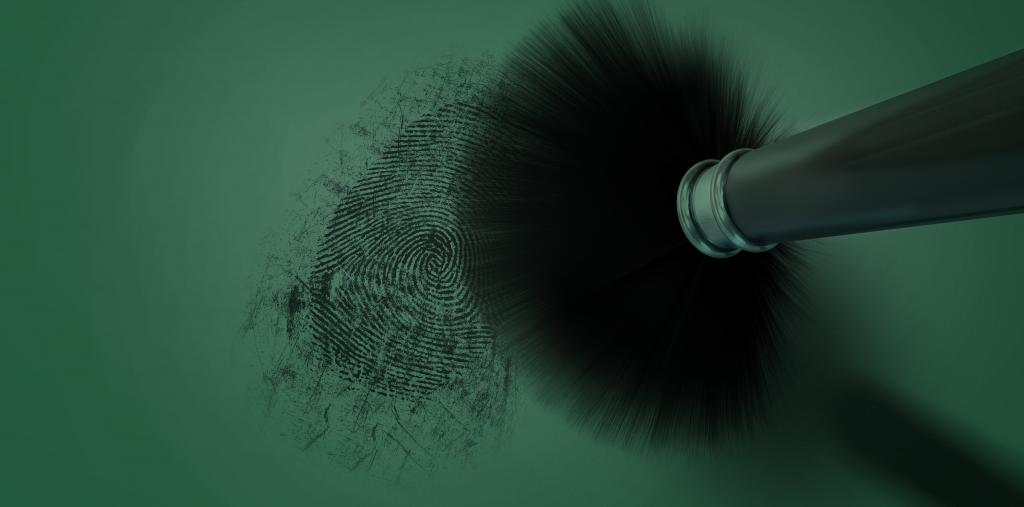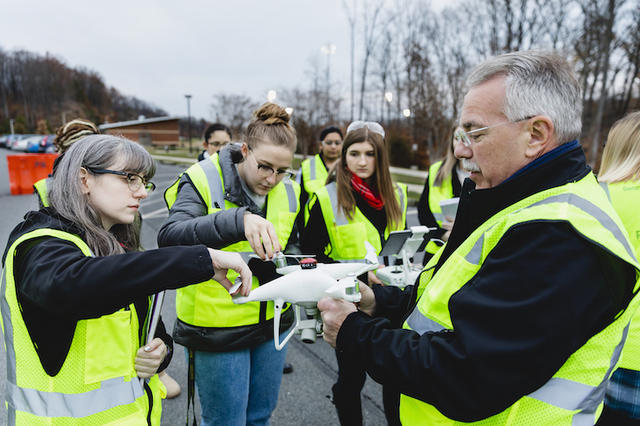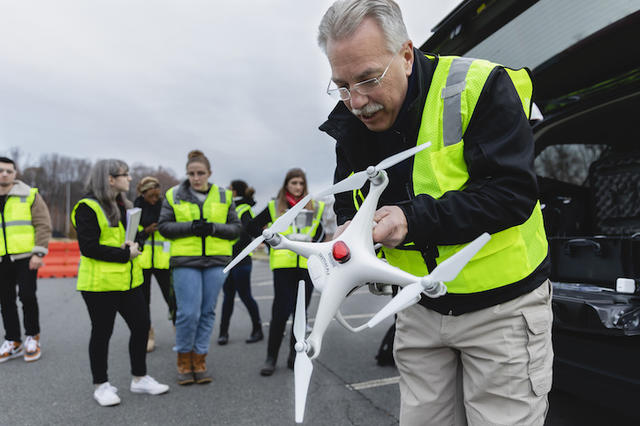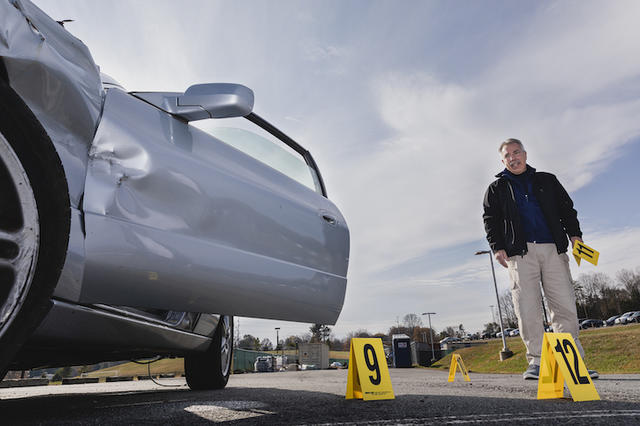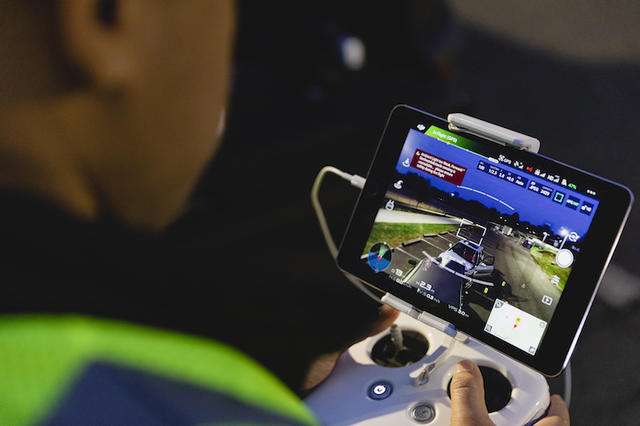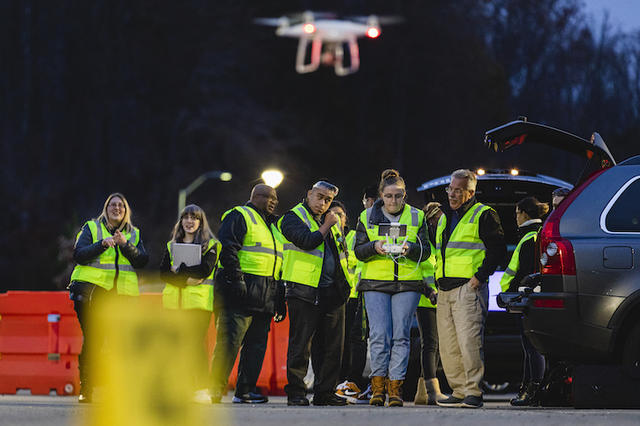Admission CTAs
Mason forensic science students learn how to apply high-tech tools to crime scenes
Mason forensic students do considerably more than just read about the advances being made in their field.
Graduate students in Steve Burmeister’s FRSC 516 Forensic Drone Photography class spent a recent fall evening on the west end of the Fairfax Campus working a simulated crime scene that involved a fatality as a result of a head-on car accident. The wrecked cars involved were towed to the location and strategically placed so as to make the scene as realistic as possible.
“We get to work in the field a lot,” said third-year graduate student Alexander Agev. “This helps us become more comfortable doing crime scene investigations.”
Students learned how to fly drones equipped with sophisticated cameras and use a state-of-the-art FARO 3D Crime Scanner that captures high-precision 3D visuals, measurements and analysis of crime scenes. They worked alongside George Mason University Police, as well as the police departments from Fairfax City and Fairfax County. Burmeister credited their support and guidance for further enhancing the students’ experience.
That’s just the kind of quality operational training that first-year graduate student Jenny Schimmel and her classmates had in mind when they enrolled in the class.
“Hands-on is really great,” Schimmel said. “I think this technology is going to be the thing, and working with Professor Burmeister has been amazing. He’s really experienced. He just knows a lot about a lot of different things.”
Having a firm command of the vast technology is essential, said Burmeister, a former FBI explosives expert now sharing his extensive knowledge as an assistant professor in the Forensic Science Program within Mason’s College of Science.
“Giving students the opportunity to learn and physically practice with a wide spectrum of technologies essentially gives them a huge advantage to solve problems,” Burmeister said. “As they say, one size does not fit all, so the more tools they have in their toolbox to attack a problem, the more effective they will be at tackling a challenge.”
It doesn’t hurt to be picking up these new skills from one of the best in the business. Burmeister, a 24-year FBI veteran, has investigated some of the most high-profile cases in American history, including both terrorist attacks on the World Trade Center, the 1995 Oklahoma City bombing, the 1996 Khobar Towers bombing in Saudi Arabia and the 2000 bombing of the USS Cole, among others.
Burmeister was the first director of the FBI’s Terrorist Explosive Device Analytical Center and one the government’s key witnesses against convicted bomber Timothy McVeigh in the Oklahoma City bombing.
Each of the students gains valuable information on the use of the technologies, as well as essential background information that could prove critical in court.
And that’s exactly the goal, Burmeister said.
“Our students are the future of forensic science,” he said, “and all of us in the department want to prepare them so they can handle and overcome the challenges facing them. Many will take unique pathways, but their experiences here will shape how they excel in the roles they assume.”
Topics: Forensic Science Program, College of Science, innovative classes
